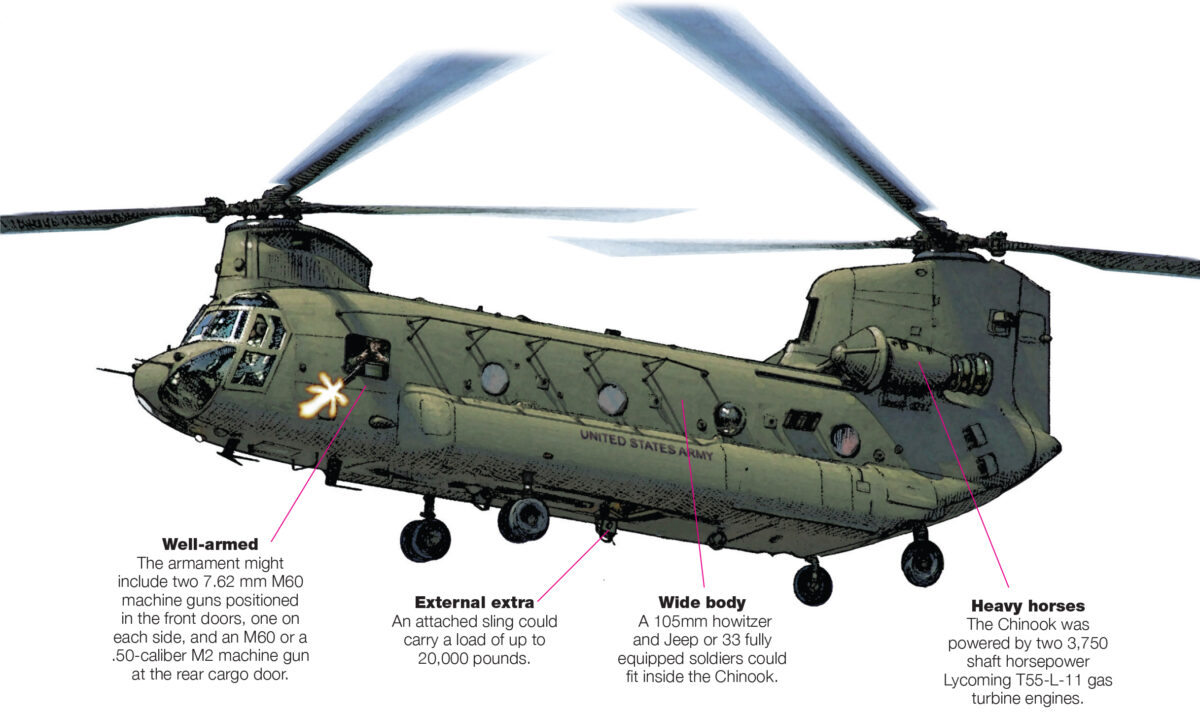The CH-47 arose from a 1956 decision to replace the U.S. Army’s piston-engine helicopters with more powerful gas-turbine models. After a yearlong debate over mission requirements, the Army settled on two designs: a troop carrier, the Bell UH-1 Iroquois, soon nicknamed the Huey; and a heavy-lift helicopter, the Boeing-Vertol YHC1B, which first flew on Sept. 21, 1961, and became the CH-47 in 1962. The twin-rotor CH-47, named after Native Americans in the Pacific Northwest, proved stable, agile and fast during flight tests. Production began in late 1963 and deliveries to the 11th Air Assault Division started a year later.
The division, reflagged as the 1st Cavalry Division (Airmobile) in June 1965, deployed to Vietnam with three Chinook companies that September. Crews quickly learned to mount a 7.62 mm M60 machine gun in each of the forward doors. Sometimes they installed an M60 or M2 .50-caliber machine gun to fire from the rear cargo door.
Pilots discovered the CH-47A’s transmission system could not handle the two gas turbines running at full power, requiring them to be careful in their power settings. Another complication: Vietnam’s high humidity and heat reduced the helicopter’s maximum lift by more than 20 percent in the lowlands and 30 percent in mountainous areas.
More powerful CH-47Bs arrived in 1968, followed just a few months later by CH-47Cs. Both enjoyed greater horsepower, an improved transmission and strengthened fuselages. Their 10-ton cargo capacity proved a boon to commanders. At the war’s peak, the Army had 21 Chinook companies in Vietnam. Nearly as ubiquitous as the iconic Huey, they provided the tactical heavy lift so vital to the air mobility concept.
Postwar improvements have enabled Chinooks to serve to this day. They flew into Pakistan to recover documents and material following the raid on Osama bin Laden’s compound. They also have proved to be the best platform for troop assault missions in Afghanistan’s high mountains—perhaps nothing speaks better to the enduring value of the Chinook’s design and the Army’s air mobility pioneers.
Rotor diameter: 50 ft.
Cargo hold: 30.5 ft. by 7.5 ft. by 6.5 ft.
Max. takeoff weight: 46,000 lbs
Max. payload: 20,000 lbs. or 33 soldiers
Maximum speed: 196 mph
Cruising speed: 149 mph
Range: 264 miles





